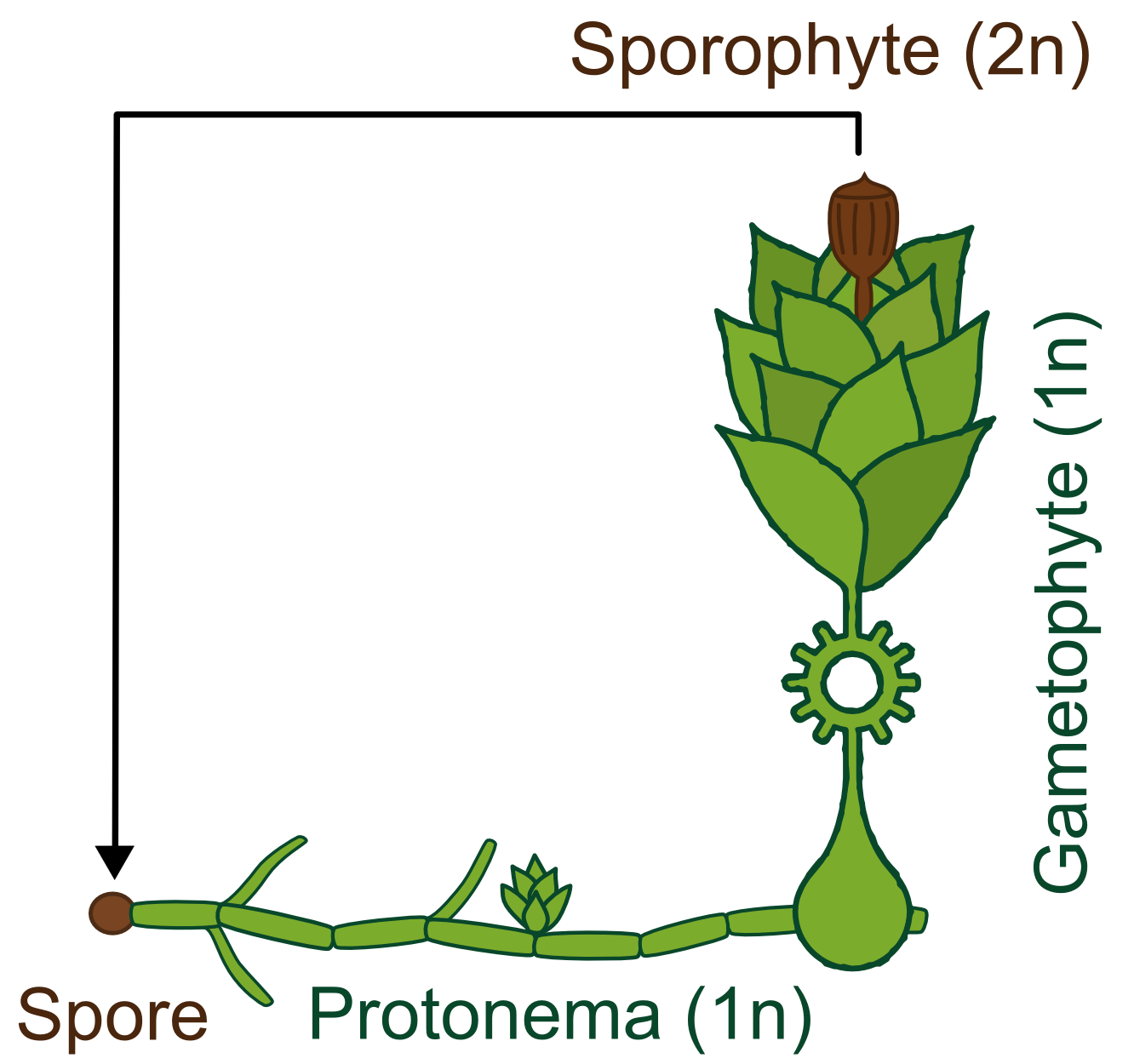Team:TU-Munich/Project/Physcomitrella
From 2013.igem.org
Physcomitrella - A model organism for Bryophytes
General description
The moss Physcomitrella patens belongs to the land plant division Bryophyta, which are one of the earliest representatives of the land plants (Embryophyta) having evolved from green algae about 470 million years ago during the early Paleozoic. Hence mosses have a much simpler anatomy than higher land plants such as trees and flowering plants, which in particular means that they have not yet developed a vascular system, i.e an internal transport system for water and nutrients. Since they also lack a complex waterproofing system to prevent absorbed water from evaporating they need a moist environment to grow. Their main habitats are therefore shady and damp places such as woods and edges of streams but they are also found to be resistant to periods of drought and therefore can be found widely spread around the world, from the tropics to tundra regions, from coastal sand dunes up to high mountains.
The general organization of plant tissue into roots, stem and leaves is found in a much more basic version in mosses. They show a differentiated stem with simple leaves, usually only a single layer of cells thick and lacking veins, that are used to absorb water and nutrients. Instead of roots they have similar threadlike rhizoids. These have a primary function as mechanical attachment rather than extraction of soil nutrients. Due to not having a vascular system bryophytes are doomed to stay small throughout their life-cycle typically stretching about 1-10 cm.
However different mosses and vascular plants are because of the early diverge of the evolutionary lineages, they share fundamental genetic and physiological processes. Hence a good approach to studying the complexity of higher land plants is to look at the bryophytes with their much simpler phenotype. Here researchers chose Physcomitrella patens as a model organism with a genome size of about 450 Mb along 27 chromosomes that is highly similar to other land plants in both exon-intron-structure and codon usage.
Life cycle
Generally land plants show an alternation of generations, the haploid (1n) gametophyte produces sperm and eggs which fuse and transform into the diploid (2n) sporophyte. This then forms haploid spores which become new gametophytes. Besides having no vascular system, bryophytes also differ from higher land plants in the fact that the gametophyte is the dominant phase of their life cycle, whereas in vascular plants the principal generation is the sporophyte.
The life cycle of P.Patens only takes about 3 months and starts with the spore developing into a filamentous structure, the juvenile, transitory stage of the gametophyte, called protonema, which is composed of two types of cells. The chloronema cells with large and numerous chloroplasts mostly perform photosynthesis and thus supply the photoautotrophic plant with energy while the task of the caulonema cells is fast growth. The adult stage of the gametophyte, called gametophore ("gamete-bearer") has a more complex structure bearing leafs, stem and rhizoids. The transition from juvenile to adult gametophyte is started by initial cells in the protonema filament that differentiate into buds. The budding is therefore a single-cell-event, greatly stimulated by the plant hormone cytokinin, which promotes cell division.
The sex organs of the moss develop from the tip of the gametophore. P.Patens is monoicous, meaning that male and female organs are produced in one plant. When liquid water is surrounding the tip, flagellate sperm cells can swim from the male sex organ to the female organ and fertilize the egg within. A zygote then develops into the sporophyte, which in turn produces thousands of haploid spores by meiosis. Sporophytes are typically physically attached to and dependent on supply from the dominating gametophyte.
World wide distribution of Physco. Environmental conditions needed for Physco.
Working with Physcomitrella - A new chassis for iGEM
Transformation, Genome Integration and Selection
BioBricks for Proteinexpression in Physcomitrella
Localization: A synthetic receptor for the Moss
SERK: The Template from P. patens
The Blueprint for our Synthetic Moss Receptor
Advanced expression: Employing SpyTag & SpyCatcher for difficult cases
SERK: The Template from P. patens
The Blueprint for our Synthetic Moss Receptor
References:
http://www.ncbi.nlm.nih.gov/pubmed/6327079 Edens et al., 1984
- http://www.ncbi.nlm.nih.gov/pubmed/6327079 Edens et al., 1984 Edens, L., Bom, I., Ledeboer, A. M., Maat, J., Toonen, M. Y., Visser, C., and Verrips, C. T. (1984). Synthesis and processing of the plant protein thaumatin in yeast. Cell, 37(2):629–33.
</div>
 "
"




AutoAnnotator:
Follow us:
Address:
iGEM Team TU-Munich
Emil-Erlenmeyer-Forum 5
85354 Freising, Germany
Email: igem@wzw.tum.de
Phone: +49 8161 71-4351